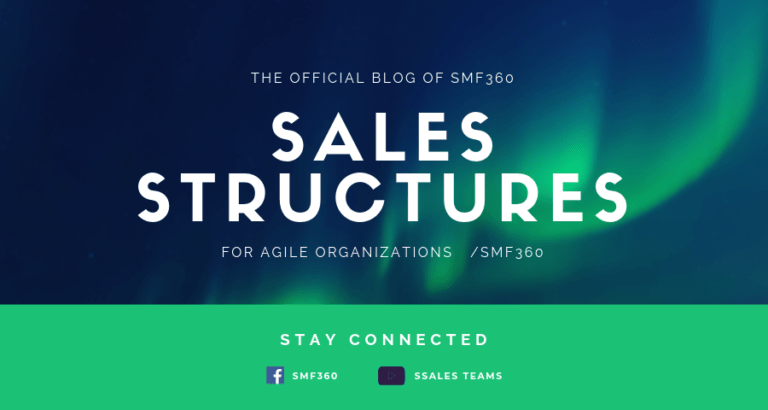Sales team structures
Sales team structures.
What prevents a sales organization from achieving success? After working with many sales organizations, I have found the answer to this question is directly related to the challenges associated with their development stage. First they have to be clear on their structure I will cover the structure stage in my next blog, for now let us focus on super sales team structures.
The Structure is key so let’s say that your current structure has achieved wonders for your business due to market changes and other circumstances you have decided to define your sales structure and most of the time we think we need the best talent or the best sales people like in a football team, we all want Messi or Michael Owen (Liverpool) or Eric Cantona (Manchester) but the reality is that whilst building the structure we are forgetting a key element the sales process (your blueprint) well defined and written (understood by a 5 year old), a recent study by Harvard shows that 50% of high-performing sales organizations have well-documented sales processes that are explicitly structured, compared to 28% of under-performing organizations. You shouldn’t just haphazardly start hiring sales staff, and expect your business to grow automatically.
Here are the 4 basic sales team structures that you can use to ramp up your sales game and build a high-performing sales organization.
The island
The island model of sales organization leads to a more traditional, “sell-or-die” environment that people typically associate with sales reps. There’s actually very little organizational structure that goes into it. You provide your team with some basic back-end services: some training, a range of products they can sell, a commission structure, maybe an office—and that’s it.
In this model, every sales rep is essentially responsible for each step of the sales process on their own. They have to generate leads by themselves, qualify them, and close them. Reps within this framework tend to be more aggressive. They’ve got their elbows out in fierce competition—not just with the larger market, but their own teams as well.
Each member of your sales team essentially becomes their own entrepreneur. Often high turnover of sales staff
This way of structuring your sales team dominates traditional sales operations, like real estate or financial services. Think about your average real estate agent. She’ll walk into her office each day, and nominally represent a larger real estate agency, like Coldwell Bankers, or the Corcoran Group. But she’ll promote her listings mostly on her own, by posting them online, calling prospects on the phone, and running open houses—all in hopes of a close.
Strength:
- Very little managerial oversight required on a one-on-one basis
- Good for simple sales processes, like a one or two call-to-close product
- Perhaps the most significant advantage of the island structure is its simplicity. The structure is easy to design and implement and requires minimal management. It works best with simpler sales processes and thrives in industries or environments that encourage competition and independence.
Limitations:
- Because each team member works independently, tracking sales metrics is a challenge. Additionally, competition between salespeople can work against the business if it leads to a toxic sales environment.
- Depending on the industry and business, this model can work on a large scale. But it can also make scaling your business difficult as each person has individual processes and strategies. Therefore, aligning your sales organization is a challenge within this model.
My Thoughts:
The island structure isn’t great for any business, but it is a start point — Changing is a most as it is non scalable, so your growth will be limited, it’s too aggressive, and too competitive—but there’s always exceptions, I don’t mind the later two. It typically suits companies that work in established markets, with high levels of competition. The island model works best for low complexity, high-transaction sales processes.
The Assembly Line
The assembly line (also known as the hunter-farmer model) is one of the most common sales structures, particularly for small to medium-sized businesses. Perhaps the most straightforward design, in this model, each team member has a specific role or function within the sales cycle.
Just as in a traditional manufacturing assembly line, the strategy is to move through the sales cycle from lead generation and nurturing to close by passing off tasks to a different sales member at each stage. In other words, one person might focus on identifying leads and another on nurturing or closing them.
A typical structure will include the following roles or teams:
- Lead generation – The engine Responsible for developing leads, and gathering names, phone numbers, emails, and data.
- Sales development (SDRs) – Develop business New or maintain Also commonly referred to as Qualifiers/Prospectors. SDRs reach out to prospects and qualify them by asking questions that focus on customer needs, and identify the decision-making process.
- Closing (account executives) – Responsible for closing the deal. They call up qualified leads, give demos, manage objections, move the deal forward, and ultimately try to close the deal.
- Customer success/account management – Once a deal is closed, new customers are passed on to this team. They’re focused on account management and keeping customers happy, increasing lifetime value (LTV) for each customer. They also help upsell customers to higher plans.
To go back to the hunter-farmer analogy, the hunters are those who focus on lead generation and prospecting (i.e., hunting for new clients), and the farmers are those whose focus is on current customer success and satisfaction. They nurture the clients to increase lifetime value and promote cross and upselling opportunities.
Strength:
The assembly line design is popular for a reason: It’s easy to understand and can work across multiple industries and products. Additionally, the assembly line can improve efficiency, make it easier to identify issues along the pipeline, and develop high skill proficiency for team members.
By specializing your sales team, it becomes much easier to isolate bottlenecks in your funnel, and fix them accordingly. For example, perhaps you set an overall sales goal of closing 12 deals out of every 100 leads sourced. If the results you’re pulling are five deals out of every 100, you can look closer at each stage of the funnel to find the friction. You might look at your AEs and see that they’re closing an acceptable 25% of qualified leads, but your SDRs are only managing to qualify 20% of raw leads.
- This sales team structure creates predictability better forecasting for your business
- Makes it easy to isolate problems in the funnel, and laser in on them
- More specialization in your sales organization equals more efficiency
Limitations:
- When you’re starting out with two sales reps, it’s difficult to split them into four different teams—you just won’t have enough manpower for the job.
- By splitting up the funnel into different stages, there can be friction between the hand off customers as they travel through the Sales funnel.
- Because teams are highly specialized, each team member becomes increasingly disconnected from the overall business goals of the company. They’re focused on their own specific numbers and metrics instead.
- The hunter-farmer sales team structure does have some disadvantages. For the model to work most effectively, you will need a larger team of at least five or six people. Additionally, though specialized roles can increase efficiency, it also poses a challenge for communication and alignment across team functions.
My Thoughts:
The power of the assembly line sales team structure lies in creating a reliable and repeatable process for nurturing leads also feeding the right information to the prospect at the right time and engaging from both ends organization and prospect, see our ramping rapid sales and marketing program. In doing so, it takes your funnel and transforms it into a revenue powerhouse as you build your business to scale.
The POD
Recommended by Jacco van der Kooji, founder of Winning By Design, the POD structure is becoming increasingly popular.
At the team level, the structure works similarly to an assembly line where each member of the group plays a specific role. However, instead of one large team, there are multiple groups (or pods) each tasked with selling to a particular set of customers.
A POD is typically organized by industry vertical, geography, territory, or product.
For example, a six-person sales pod would be composed of three SDRs, two AEs, and one Customer Success rep. Instead of having large teams, you create little pods of specialized roles, and each pod is responsible for the entire journey of specific customers.
Strengths
The POD model takes advantage of the assembly line efficiency while strategically assigning people (and groups) to the customer base that they (hopefully) will be most successful with.
By diversifying the team, the POD also reduces some of the issues that arise from human error. In other words, team members ideally have complementary strengths and weaknesses to ensure more effective sales (i.e., one person’s weakness is another’s strength).
The POD sales team structure is also more flexible and is a good choice for growing organizations looking to efficiently and effectively scale their sales operations.
With the pod, you build a more modular and flexible structure than the traditional model. Since success is measured by pod, each member of the sales force has a larger, more holistic view of the entire company. Pods build more meaningful connections between people who are working together. You can specialize pods based on different industries, verticals, or countries.
- Because pods work in close-knit teams, your sales team doesn’t just care about their own step in the process, but about the entire customer journey.
- High empathy and understanding within pods, less friction and better communication
- Pods are more flexible and agile.
Limitations:
- With the pod structure, there’s less opportunity for your individual sales reps to compete and grow, and push each other to excel
- Less specialization with each role, as each member becomes more of a “jack-of-all-trades”
Creating a culture of success
How you structure your sales organization will depend on your specific business, market, and goals. Yet, whatever model you choose, it is essential to imbue the organization with a culture that promotes high performance.
Without culture, your structure can’t reach its full potential. Here are two important ways you can build a winning culture into the foundation of your sales organization.
1. Clearly define sales roles
You can have an elegant sales structure, but if your team members don’t understand their roles and responsibilities, your business will suffer.
Whatever model or approach you implement in your sales organization, make sure each person has a clearly defined role (whether they specialize or are generalists with many responsibilities) to prevent confusion, inefficiencies, and redundancies.
One way to ensure everyone is on the same page is to work with SMF360 as your preferred consultant to guide you all the way implementing the structure.
By documenting each step of the sales process and mapping key stakeholders and individual roles, everyone can stay on the same page even in times of change.
2. Promote an environment of learning
A lack of training is one of the biggest problems facing sales organizations today. In fact, according to Kurlan Associates, as many as three out of four sales reps “cannot execute.” In other words, they’re ineffective.
But it doesn’t have to be this way!
For most people, the issue lies in lack of training—not a lack of ability. When sales organizations prioritize coaching and bake it into their sales structure, the whole organization thrives.
That is why coaching should be one of the critical functions of any sales manager. In fact, a study by OMG found that when sales managers invested 50% of their time to coaching, salespeople scored 28% higher in sales competency measures than those who received less training. Let us help you here, it is in your organization best interest.
And do not forget get your CRM with SMF360 and make sure your sales structure is implemented in your CRM to scale your business.








